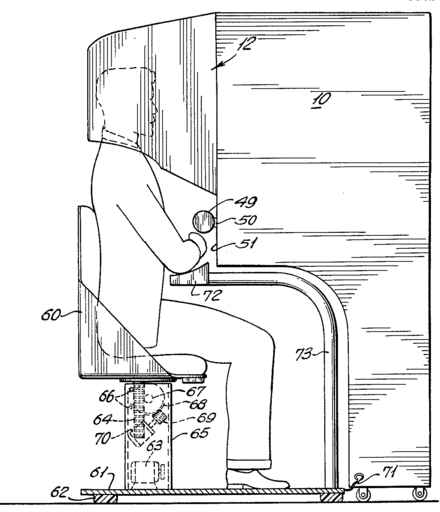
Virtual Reality (VR) has become a ubiquitous part of modern technology, providing immersive experiences in gaming, education, healthcare, and more. But who actually invented the VR system as we know it today?
The development of VR is the result of contributions from multiple innovators over several decades, each adding crucial elements to what we now recognise as VR technology.
Early Beginnings
The concept of virtual reality can be traced back to the mid-20th century. One of the earliest inventions was the Sensorama, created by Morton Heilig in 1962. The Sensorama was an arcade-style theatre cabinet that provided a multi-sensory experience, including 3D visuals, stereo sound, vibrations, and even scents. Although not interactive, it laid the groundwork for immersive experiences.
Source: Smithsonian Magazine
The Birth of Head-Mounted Displays
- Enjoy the ultimate way to experience everything you love. Now you can get Batman: Arkham Shadow and a three-month trial …
- Unlock new ways to work, play, relax and connect with mixed reality, where you can blend digital objects into your physi…
- With the most powerful Quest yet,* every experience looks sharper, plays faster and runs smoother. Enjoy life-like graph…

The development of head-mounted displays (HMDs) was a significant milestone in VR technology. In 1968, computer scientist Ivan Sutherland and his student Bob Sproull created the first head-mounted display system, dubbed the “Sword of Damocles.” This device was incredibly rudimentary by today’s standards and required a mechanical arm to suspend it from the ceiling, but it introduced the concept of viewing a virtual world through a headset.
Source: History of VR
Advancements in the 1980s and 1990s
During the 1980s and 1990s, VR technology saw significant advancements thanks to several key figures and companies:
- Jaron Lanier, founder of VPL Research, coined the term “virtual reality” in the 1980s. His company developed several VR products, including the DataGlove and the EyePhone HMD, which allowed users to interact with virtual environments using hand movements and head tracking.
- Tom Furness, a pioneer in VR for military applications, developed flight simulators for the U.S. Air Force. His work contributed to the understanding and application of VR in training and simulation.
Source: Virtual Reality Society
The Modern Era: Consumer VR
The real breakthrough in consumer VR came in the 2010s, with the advent of more affordable and sophisticated VR systems. One of the most pivotal figures in this era is Palmer Luckey, who founded Oculus VR. In 2012, Oculus launched a Kickstarter campaign for the Oculus Rift, a VR headset that offered a high-quality, immersive experience at a relatively low cost. The success of this campaign brought VR back into the spotlight and led to the acquisition of Oculus by Facebook in 2014.
Source: The Verge
Contributions from Major Tech Companies
Following the success of Oculus, other major tech companies entered the VR market, further refining the technology:
- HTC and Valve collaborated to create the HTC Vive, which offered room-scale VR experiences using external sensors for precise tracking.
- Sony launched the PlayStation VR, making VR accessible to a broad audience through its integration with the PlayStation 4 console.
- Google and Samsung developed mobile VR solutions like Google Cardboard and the Samsung Gear VR, bringing VR experiences to smartphones.
Source: CNET
Conclusion
The invention and evolution of the VR system are not attributed to a single individual but rather a series of innovations and contributions from various pioneers in the field. From Morton Heilig’s Sensorama to Palmer Luckey’s Oculus Rift, each development has built upon the last, leading to the sophisticated VR systems we enjoy today.
Ready to explore the world of VR? Check out the latest VR headsets on Amazon.
For more detailed insights into the history of VR, you can visit Virtual Reality Society and History of VR.
